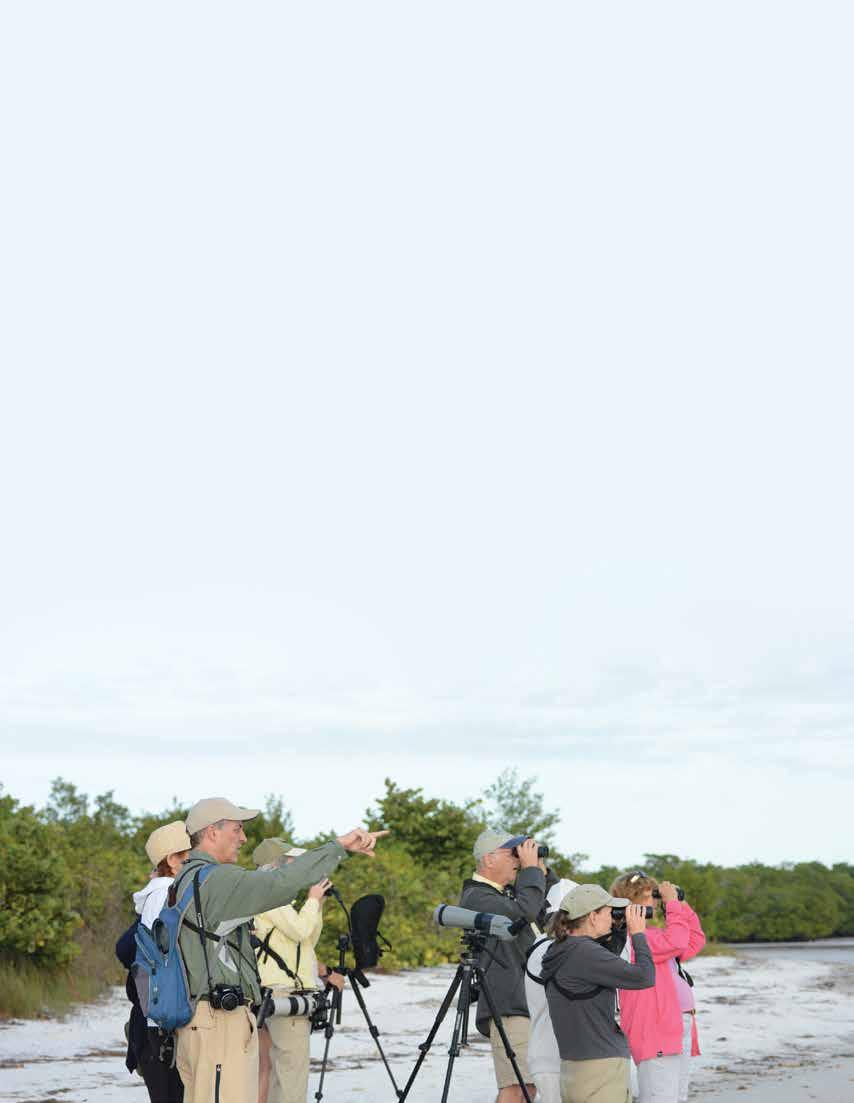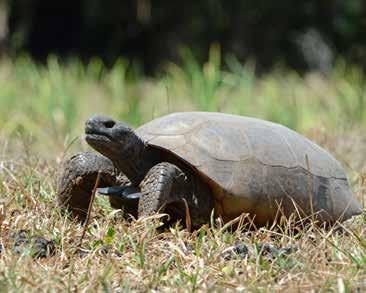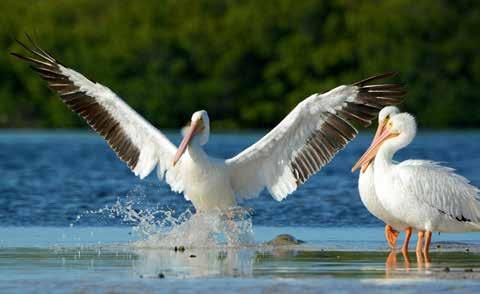
3 minute read
SEEING 20/20
The clear benefits of Conservation 20/20 land stewardship for Southwest Florida
In 1996, Lee County’s population was 374,395. In 2020, the U.S. Census Bureau’s total population for the county was 822,453. While people keep moving to Southwest Florida, nature is declining at rates faster than ever before in history, according to the Nature Conservancy. North America’s bird population has declined by nearly 30% since 1970. Worldwide, 40% of insects are declining and a third are endangered. Every 30 seconds, a football field’s worth of America’s natural areas are lost to development.
Fortunately, Lee County voters established Conservation 20/20 through referendum in 1996, allowing Lee County to purchase, preserve and manage environmentally sensitive areas for future generations.
“Lee County has always been a forward-thinking county,” said Lee County Commissioner Brian Hamman. “Voters identified in 1996 that there were pieces of our paradise they didn’t want to disappear. We were fast-growing then, but as the area has continues to grow, we can appreciate the preserves now even more.”
The idea is a good one. U.S. President Joe Biden launched America the Beautiful initiative in 2021 that seeks to preserve 30% of lands and waters in the U.S. by 2030, calling the project 30 by 30.
The concept of Conservation 20/20 is simple: Use taxpayer funds to purchase land from property owners who are willing to sell for the benefit of people and wildlife. To date, the program has acquired 157 properties and 31,432 acres, creating 52 preserves.
Properties for purchase and management plans are recommended to the Lee Board of County Commissioners by a citizens’ advisory commission called the Conservation Lands Acquisition and Stewardship Advisory Committee.
“What’s different about this program rather than using policy regulations or zoning to protect land, is we can do it without infringing on property rights,” Hamman said. “We are able to balance growth while protecting the environment. That’s what this program is about.”
Protecting conservation areas is important for many reasons, including ensuring water supply and quality, flood prevention, and providing green space for wildlife and nature-based recreation and enjoyment.
Some of the many benefits of the program include:
· Providing habitat for endangered and threatened animal species, including the Florida scrub-jay, gopher tortoise, Florida panther, West Indian manatee and eastern indigo snake. Rare plant species include the Florida butterfly orchid, Catesby’s lily and golden leather fern.

· Storing water during the rainy season, which also helps with surface water management that can help prevent flooding. Water that filters into the ground helps replenish groundwater aquifers for the county’s drinking water supply.
· Restored wetlands help clean the water that flows into water bodies like the Caloosahatchee River and the Gulf of Mexico.

Cost/Benefit Analysis
Purchases and management are funded by the county’s general fund through a countywide tax millage. The county projects about $5 million per year to cover the maintenance, operation and restoration for the next five years. While the program costs money, preserving greenspace and wetlands provides economic benefits. According to the The Trust for Public Land, market values of properties located near parks, preserves and open spaces are higher than those of comparable properties located elsewhere, which in turn means higher property taxes to fund other county programs. The Conservation Foundation says that preservation also helps avoid or mitigate future costs, including:
· Health impacts, such as degraded air quality and extreme heat
· Flood prevention/loss from flood damage
· Energy costs resulting from extreme temperatures
· Wildfires
· Increasingly severe storms
· Cost of treating drinking water
Additional economic benefits include the creation of jobs from recreation and tourism. The Conservation 20/20 program uses rangers, managers and parks and recreation employees from several county departments.
Management
To realize the benefits of preservation, the properties need to be responsibly managed. For preserves in Lee County, the focus is to restore and maintain these lands in their natural state, while enhancing hydrologic features and protecting water resources.
After property is acquired, the county staff creates management plants designed to preserve, protect and enhance the wildlife habitat and plants. Management can include restoration, exotic control, prescribed burns and native planting, and maintaining human enhancements, including trails, boardwalks, restrooms, paddle boat launches, picnic pavilions and parking areas.
Recreation
Residents and visitors can benefit from the program through recreational use, including hiking, kayaking and canoeing, horseback riding, fishing and wildlife observation. Free guided nature hikes and themed walks are hosted at various preserves throughout the year. Don’t forget the mental and physical health benefits of being outside!
“I think our area’s natural paradise is why so many people flock to Lee County, and not just with the beach,” said Hamman, who also serves on the county’s Tourism Development Council. “You can connect with nature. The first time I took my son fishing was at Yellow Fever Creek Preserve. Enhancing access gives people opportunities to stay in touch with nature.”
Residents can nominate property for consideration, as well as find information, reports and scheduled events at leegov.com/parks/conservation2020.








